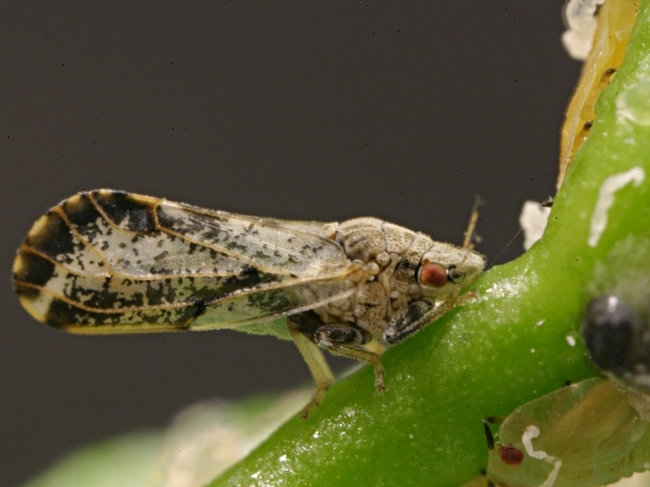Native to Asia, the Asian citrus psyllid, Diaphorina ciri, was first detected in the United States in June 1998 in Palm Beach County, Florida. Since then, ACP has invaded all other US citrus areas. It has been detected in 26 of California's 58 counties. Infected psyllids can transmit the bacterium Candidatus Liberibacter asiaticus, which causes the fatal citrus disease Huanglongbing (HLB). HLB is currently the most devastating threat to the worldwide citrus industry. A citrus tree infected with HLB may not exhibit any symptoms for two years, and will usually die within five years. UC ANR IPM states that there is no known cure. “The only way to protect trees is to prevent spread of the HLB pathogen in the first place, by controlling psyllid populations and removing and destroying any infected trees.”
The California Department of Food and Agriculture (CDFA) has set up extensive monitoring and quarantine programs to track and try to slow the spread of the insect and disease. Currently, both residential and commercial sites that have citrus are monitored by checking yellow sticky traps. Psyllid and leaf samples are being tested for the presence of HLB.
If ACP is detected in an area, farmers must resort to regular spray programs to try to control the ACP population. This practice negatively impacts efforts to have a citrus crop grown with IPM strategies that rely on beneficial insects. In a ground-breaking discovery encompassing six years of research, an international team of scientists led by UC Davis chemical ecologist Walter Leal announced they've identified the sex pheromone of ACP. This pheromone can be used to attract more ACP to sticky traps. “Having a [pheromone] lure to dramatically improve captures of this psyllid with the conventional sticky traps is a major progress toward [developing] integrated pest management [strategies],” said Professor Jose Robert Parra of the University of Sao Paulo. Read more.

Author - KARE Program and Facility Coordinator, IR-4 Field Research Center Director